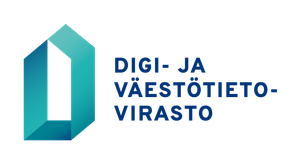The Population Register Centre’s report highlights new solutions for improving the accessibility and coverage of electronic identification
According to the report, electronic identification needs updating also because the costs of identification are increasing too high for the state, as online transactions become more popular and the intensity of use grows. The report also outlines how new identification solutions could promote the development of new types of digital services, and the citizens’ rights to manage their own information.
The state has to ensure different groups’ equal rights to digital transactions
More attention has to be paid to equality between citizens, following the increased use of electronic services. The Population Register Centre proposes that an easy-to-use, free and safe method of identification to public services should be ensured for all citizens.
Special attention should be paid to developing the identification service’s accessibility. Officials also have to make sure that public administration services are accessible to all users, including those with disabilities.
Moreover, several electronic services of public administration do not currently reach persons under the age of 18, Finnish people domiciled abroad, immigrants and foreigners dealing with Finnish officials. Important services for minors include, for instance, accessing their own health and study records.
Immigrants and foreigners dealing with Finnish officials may lack an identification method required for electronic identification, as they do not have a Finnish personal identity code. Finnish people domiciled abroad may also lack a Finnish identification method to access the services, even if they have a Finnish personal identity code.
Basic digital infrastructure could be offered by the state: citizens’ initial electronic identification and an identification method
In its report, the Population Register Centre proposes that the state produces citizens’ initial electronic identification as a free basic service as part of society’s digital basic infrastructure. Citizens’ initial electronic identification will be reliable, if they use the new electronic identification method. In the interviews conducted for the report, several respondents recognised a need for this service. The state’s role as a provider of initial identification would promote the use of strong electronic identification more widely than simply in the services of public administration.
The police’s licence services would continue to form the foundations of the initial identification network. The report points out that, in the future, citizens could receive an electronic identification method simultaneously when an identity card is issued. The electronic identification method provided by the state would primarily be a smartphone application. Its alternative would be a USB identification device. The Citizen Certificate stored on the identity card would no longer be valid.
Holders of a valid passport or an identity card could receive the new electronic identification method automatically, without a separate visit to a service point.
Free initial identification provided by the state would also facilitate the use of electronic services in the private sector. “Citizens could be reliably identified online without having to ask them to visit the service provider’s office for identification purposes at the beginning of a customer relationship”, says Director General of the Population Register Centre Janne Viskari.
According to the Population Register Centre, one long-term solution could be ‘the citizen’s identity wallet’, which would enable citizens to control what information they want to provide for different services. In addition to personal identification, it would include different types of authentication information and licences, such as a driving licence and firearm licences and permits.
The Population Register Centre’s report mapped out alternatives for citizens’ strong electronic identification
In August 2018, the Ministry of Finance asked the Population Register Centre to explore whether the principles of citizens’ strong electronic identification needed updating. The report mapped out different alternatives on how to organise identification to the electronic services of public administration in the most appropriate way.
At the same time, the objective was to ensure that the identification solutions in use in the future are as accessible and easy-to-use as possible for all users.
The Finnish Competition and Consumer Authority, the Ministry of Transport and Communications, and Traficom have expressed dissenting opinions on the proposals presented in the Population Register Centre’s report.
Director General of the Population Register Centre Janne Viskari delivered the report to Ministry of Finance on 8 March 2019. Electronic identification: Report on the current situation, development needs and alternatives has been published in the publications of the Ministry of Finance: 2019:20.
About Digi- ja väestötietovirasto
The Population Register Centre implements the National Architecture for Digital Services in cooperation with the Ministry of Finance. The task of the agency is to promote digital society by providing and developing support services for citizens and public administration. In addition, the Population Register Centre is the data controller for the Population Information System together with the local register offices. The agency maintains and develops the Population Information System, its data and data quality as well as certified electronic services. The Population Register Centre offers information services and certificate services from the Population Information System. It also performs duties related to elections. www.vrk.fi
Subscribe to releases from Digi- ja väestötietovirasto
Subscribe to all the latest releases from Digi- ja väestötietovirasto by registering your e-mail address below. You can unsubscribe at any time.
Latest releases from Digi- ja väestötietovirasto
Suomi.fi-mobilappen förnyas 22.4.2024 – Se hur ändringen påverkar dig!17.4.2024 15:05:00 EEST | Tiedote
De nya Android- och iOS-versionerna av Suomi.fi-mobilappen publiceras 22.4.2024. I och med förnyelsen förändras appens utseende och funktioner. I den nya Suomi.fi-mobilappen har bland annat appens användbarhet, tillgänglighet och navigationsstruktur förbättrats. När den nya appen har publicerats är det inte längre möjligt att använda gamla versioner av appen.
Suomi.fi-mobiilisovellus uudistuu 22.4.2024 – Katso miten muutos vaikuttaa sinuun!17.4.2024 15:05:00 EEST | Tiedote
Suomi.fi-mobiilisovelluksen uudet Android- ja iOS-versiot julkaistaan 22.4.2024. Uudistuksen myötä sovelluksen ulkonäkö ja toiminnallisuudet uudistuvat. Uudessa Suomi.fi-mobiilisovelluksessa on parannettu muun muassa sovelluksen käytettävyyttä, saavutettavuutta ja navigaatiorakennetta. Kun uusi sovellus on julkaistu, vanhojen sovellusversioiden käyttäminen ei ole enää mahdollista.
The new versions of Suomi.fi mobile application will be launched 22.4.2024: See how the change affects you!17.4.2024 15:05:00 EEST | Press release
The new Android and iOS versions of the Suomi.fi mobile application will be launched 22.4.2024. As a result of the update, the appearance and functionalities of the application will change. The new application has improved usability, accessibility and navigation structure. Once the new application is published, it will no longer be possible to use older versions of the application.
Aino ja Eino uudet lasten suosikkinimet16.4.2024 09:29:34 EEST | Tiedote
Vuonna 2023 Suomessa syntyneiden lasten suosituimmat ensimmäiset etunimet olivat suomenkielisillä lapsilla Aino ja Eino. Kaksi vuotta putkeen suosituimman lasten nimen titteliä hallinneet Olivia ja Leo joutuivat viime vuonna väistymään kärkipaikalta. Ruotsinkielisillä lapsilla ykköspaikkaa pitävät Ellen ja Liam ja muunkielisillä lapsilla Sofia ja Adam.
Digihumaus-rapporten 2024: Åldrande och mångfald driver på förvaltningen, men man måste satsa mer på digital infrastruktur än i nuläget11.4.2024 12:15:00 EEST | Tiedote
Myndigheten för digitalisering och befolkningsdata har idag publicerat en ny Digihumaus-rapport. I rapporten analyseras förändringar i Finlands befolkning och deras betydelse för den offentliga förvaltningen. Rapporten är en fortsättning på Digihumaus-rapporterna som publicerats under de fyra senaste åren. I rapporten har temat delats in i fyra undertrender: åldrande, invandring, differentiering av områden och mångfald.
In our pressroom you can read all our latest releases, find our press contacts, images, documents and other relevant information about us.
Visit our pressroom
